The ’12 Days of Christmas’ is a classic holiday song first published in its current form in 1908. In a nod to the classic carol, join The Hockey Writers as we count down the 12 Days of Hockeymas. Each day, we will provide you with a piece of hockey history as we eagerly await the start of the 2020-21 NHL season.
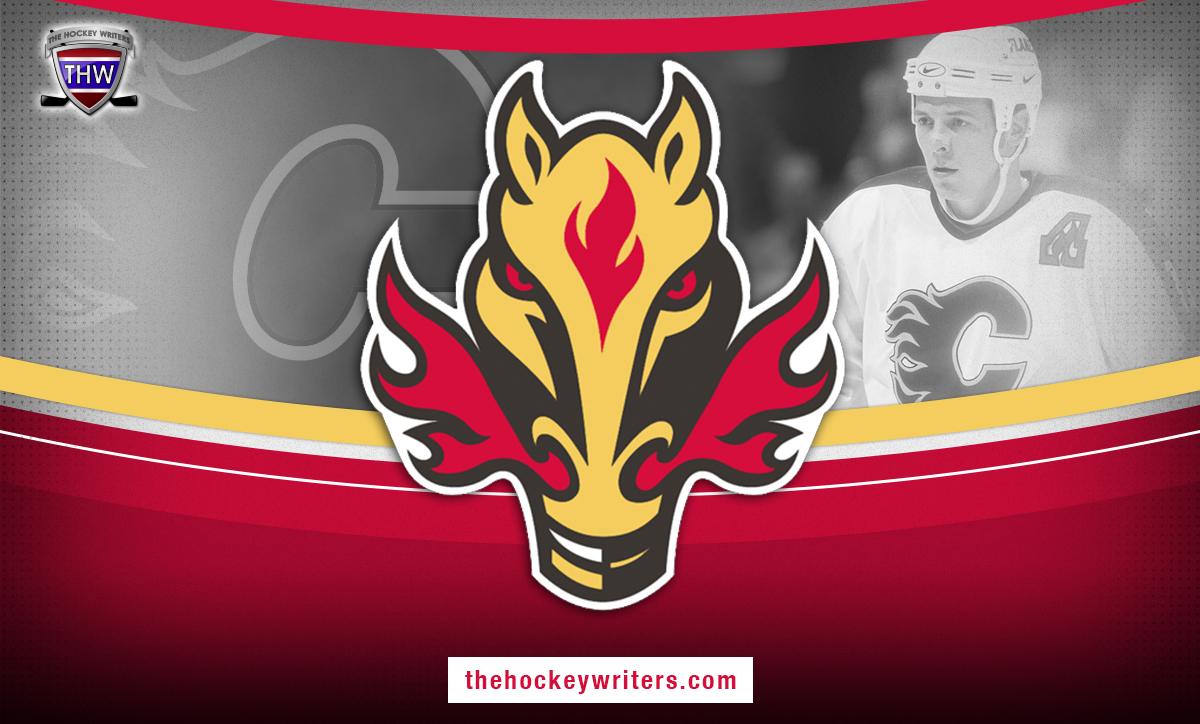
I don’t know if one of the Calgary Flames accidentally broke a mirror at the end of the 1995-96 season or if the team bus smashed into a glass factory, demolishing a thousand mirrors. It doesn’t really matter who the culprit was, because the result was unmistakable: seven years of bad luck, marking the worst stretch in the franchise’s history.
To that point, the Flames were a model of consistency. In the sixteen seasons after they arrived in Calgary from Atlanta, the team had missed the playoffs only once. That down year came in 1991-92, but they bounced back the following season, winning 43 games to finish second in their division. They were a proud franchise with a history of winning, a history of postseason appearances, and a history of deep Stanley Cup runs, including their 1989 championship. So, what happened to start this exceedingly bad chapter in the team’s history?
Flames Were Already in Decline by 1996
The beginning of the Flames’ 1995-96 season was marred by the holdout of team captain and franchise player, Joe Nieuwendyk. The contract dispute dragged on until late December when the Flames finally traded the star center to the Dallas Stars for Cory Millen and top prospect Jarome Iginla.
The team had their worst start in franchise history with a 0-7-3 record. The Flames managed to pull it together and posted a mediocre 34-37-11 record which was good enough to make the playoffs in a very weak Western Conference. Their first-round series against the Chicago Blackhawks was a disaster, a 4-0 sweep, but it featured the debut of future Flames legend Jarome Iginla, who joined the roster right after his WHL team was eliminated from the playoffs.
The 1996-97 season saw second-year captain Theoren Fleury lead the team in goals and points, but he wasn’t the only bright spot on the roster. Newcomer Iginla led NHL rookies in scoring with 50 points, but he failed to win the Calder Trophy. Overall, the team lacked a scoring punch, and the Flames missed the playoffs by eight points. It was only the second time they had missed the postseason since their move to Calgary – but the worst was yet to come.
Hitting Rock Bottom With a Franchise Low 67 Points
The 1997-98 season was supposed to be a bounce-back year and a fresh start, but the Flames fell farther behind in the Western Conference. Popular veteran forward Gary Roberts was traded that offseason because he felt a move to an eastern team would reduce his travel and aid his comeback from a severe neck injury.
Again, Fleury led the team in scoring, and he reached a major milestone by becoming the Flames’ all-time leading goal scorer in November 1997. Despite all of this, the Flames decided to strip the captaincy from the only remaining player from the 1989 Stanley Cup team and give it to rugged, depth defenceman Todd Simpson. This odd move was part of a master plan to distance the team from the old days and rebrand the squad as the “Young Guns.”
However, it didn’t seem to matter who the captain was or how young the guns were, the Flames were still a weak team with suspect defence and forwards who had trouble putting the puck in the net. They opened the season with a miserable 1-7-2 record, which was the team’s second-worst start in franchise history. Ultimately, the Flames finished the campaign with a terrible 26–41–15 record, and 11th place in the Western Conference. The team’s 67 points were the lowest the franchise had posted since the expansion Atlanta Flames managed just 65 points in 1972-73.
Flames Continued to Lose Star Players
By the start of the 1998-99 season, the Flames found it increasingly difficult to retain their best players as NHL salaries escalated and the Canadian Dollar tanked against U.S. currency. As one of the smallest markets in the league, the team found it hard to compete in the new economic environment.
Rather than lose Fleury in free agency, the Flames traded their star forward to the Colorado Avalanche midway through the season, shortly after he became the franchise’s all-time leading scorer. As the last remaining player from the championship team, the move officially closed the book on the Flames’ 1989 Stanley Cup.
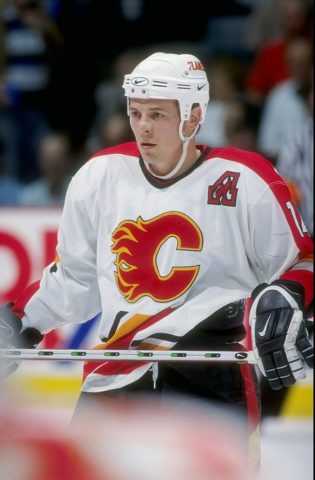
Despite losing their top player and suffering multiple goaltending injuries, the team improved from their historically bad season to find themselves in a playoff spot with a month left in the season. However, Calgary won only two of their final eleven games, falling to 9th in the conference and missing the playoffs by six points.
The Fight to Keep the Franchise Alive
As the Flames bottomed out in the standings, attendance at the Saddledome sagged. By the 1999-2000 season, stretches of empty seats became the norm, so the ownership group issued an ultimatum: buy more season tickets or the team will share the same fate as the Winnipeg Jets and the Quebec Nordiques.
The threat of relocation to a U.S. market worked, and fans responded by buying enough season tickets during the next two years to keep the team in Calgary. However, increased sales did little to stem the team’s financial losses, which were estimated to be $14 million over the next three years.
On the ice, it was the same old story. This time, the squad suffered through its fourth-worst start in franchise history, posting a 2-6-2 record. The Flames had an injury-plagued season, losing 479 man games and using a total of 45 roster players over the course of 1999–2000. They finished last in the Northwest Division, but it wasn’t all bad news. The Flames witnessed a breakout year from third-year forward Valerie Bure, who led the team in goals and points.
Despite Their Failures, an NHL Star Was Born in the Early 2000s
Over the next several years, the Flames churned out consistently bad finishes in the Western Conference. With point totals of 77, 73, 79 and 75, the group kept missing the playoffs and extended their playoff drought to seven years.
Ex-Oiler Steve Smith replaced Simpson as team captain, but after two seasons, the veteran defenceman was supplanted by Dave Lowry, who would then be swapped out for co-captains Craig Conroy and Bob Boughner. It really didn’t matter who was steering the ship during these turbulent years, the Flames remained a very inconsistent group who found a way to fade from playoff contention.
Despite the team’s ongoing failures, the Flames did produce the NHL’s next breakout star. Since he joined the Flames in 1996, Iginla had been slowly climbing to the top of the team’s scoring race. In 2001-02, the rest of the hockey world finally took notice when he won the Rocket Richard and Art Ross Trophies as NHL goal and point-scoring champion after scoring 52 goals and 96 points.
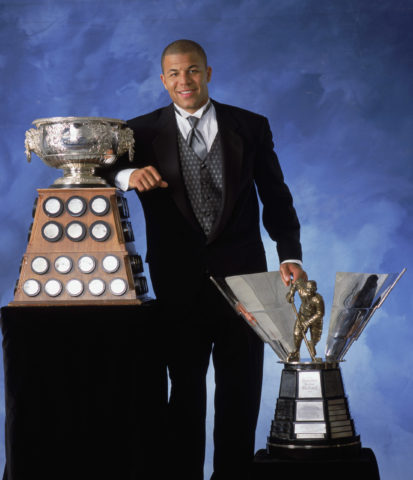
It is widely believed that Iginla was robbed of the Hart Trophy as league MVP that season. But, the budding superstar didn’t have time to wallow, as he was selected to play in the 2002 Olympics where he assisted on Sidney Crosby’s famous golden goal that secured the medal for Team Canada in Salt Lake City. Iginla became the Flames’ captain for the 2003-04 season.
The 1997-2003 Era Left a Legacy of Bad Jerseys and Multiple Coaches
The Flames’ seven years of suffering won’t soon be forgotten, but there is much more to this story than woeful regular seasons and a lack of playoff appearances. The franchise’s dramatic nosedive happened to coincide with the introduction of a brand new look. At the start of the 1995-96 season, we said goodbye to the classic jerseys worn since the team moved to Calgary in 1980 and said hello to a strange colour scheme that boldly added black into the mix, featured way too many stripes and showcased a much smaller Flaming C.
Three seasons later, the organization added a controversial black third jersey, which featured the polarizing “Blasty” horse head logo. Thankfully, by the mid-2000s the franchise moved away from this branding disaster. Today, the Flames are honouring their origins by finally returning to the classic 80s look for the start of the new season in January. Inexplicably, Blasty is also making a comeback as the team’s new third jersey.
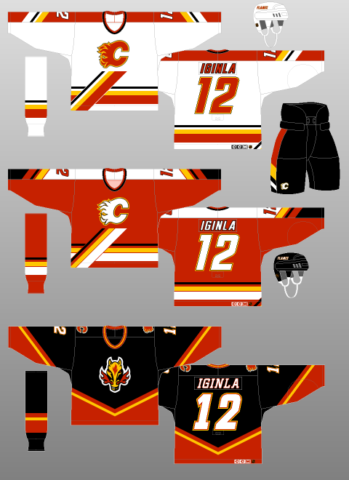
Chronic losing also means a whole lot of second-guessing from upper management, and for seven seasons, it was the Flames’ head coaches who paid the ultimate price when the players failed to deliver results on the ice.
Pierre Page was hired in 1995 because the Flames had been perennial playoff underachievers since winning the Cup in 1989, but he was tossed overboard after two losing seasons. Brian Sutter replaced Page in 1997 and brought a no-nonsense coaching style, but he also failed to move the needle and only lasted three seasons.
His replacement, Don Hay, was unceremoniously sacked in 2001 after only 68 games in favour of Greg Gilbert, who didn’t even finish his second season behind the bench. After Gilbert, the team then coaxed former Flames bench boss Al MacNeil out of retirement to be an interim coach for eleven games during the 2002-03 season before finally putting an end to the coaching carousel and hiring Darryl Sutter to be the Flames’ sixth head coach in seven seasons.
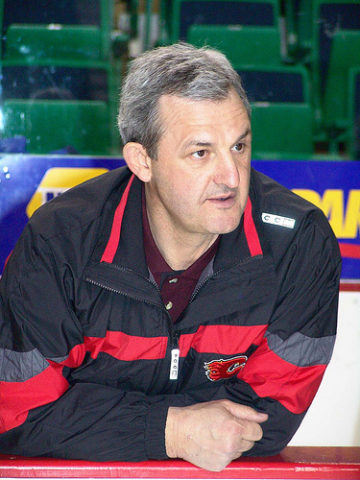
Sutter also became the team’s general manager to start the 2003-04 season and is widely credited with revitalizing the franchise. Among Sutter’s first moves was to acquire goaltender Miikka Kiprusoff from the San Jose Sharks early in the season, and the Finnish netminder did not disappoint.
The addition of Kiprusoff was the spark the Flames needed to successfully break free of the team’s worst stretch in franchise history. Not only did the they finally make the playoffs, but they captured the imagination of a nation when they made it to the 2004 Stanley Cup Final, losing in Game 7 to the Tampa Bay Lightning.
Despite the heartbreaking end to an epic comeback season, I can’t think of a better way for the Flames to shatter seven dreadful years of back luck.